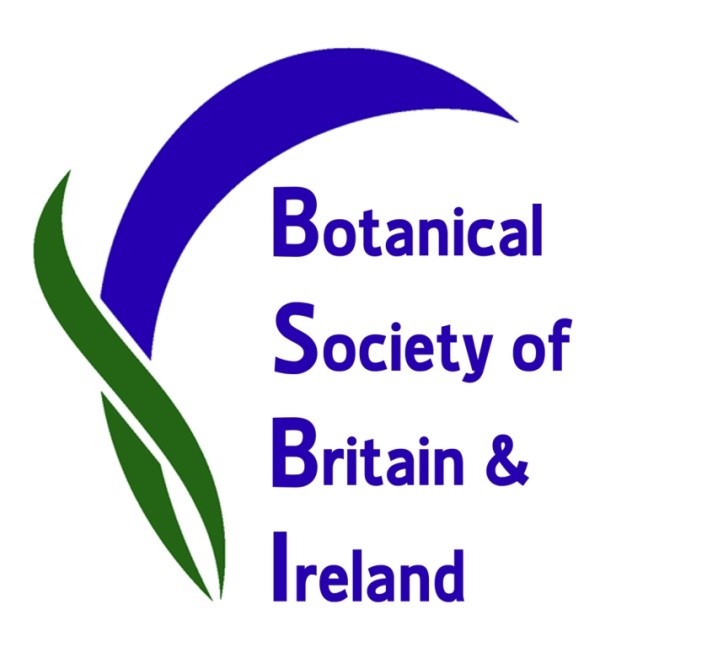Dumfriesshire Botany Group at Comlongon, 4th May 2023
Ten of us met at Comlongon Castle on a fine windy morning. We had been invited to survey the site by the Estate Manager Kay Kingstone with the permission of the owners. Comlongon has recently been acquired by Prof David Thomson, and Teresa Church who also own the Annandale distillery and the Globe Inn. They have plans to undertake major restoration work on the buildings and also enhance the habitat for existing species and encourage ecosystem regeneration. So any botanical information we can provide will help inform the plans.
Comlongon is a grade 1 listed building. The tower is thought to date from around 1500. The attached mansion house is from around 1900 but replaced an older mansion. There is a garden attached with some specimen plantings including some large old yews and a fine Lucombe Oak specimen (Cork Oak Quercus suber x Turkey Oak Quercus cerris).
To be more helpful we broke our recording into different sections of the estate. The first section we recorded were the grounds around the house including the garden. Here we were recording those plants that are uninvited guests rather than those intentionally planted. So a range of wild plants able to grow on stonework or gravel or in spaces in the garden or in the lawns. There were one or two interesting things from a botanical point of view. New Zealand Bitter-cress Cardamine corymbosa was on the gravel at the front of the mansion. This very small flower is spreading with container grown nursery stock. It was accompanied by Common Whitlow Grass Erophila verna another small white flower of early spring. On the walls the Ivy-leaved Toadflax Cymbalaria muralis was accompanied by the small ferns, Wall Rue Asplenium ruta-muraria, Maidenhair Spleenwort Asplenium trichomanes ssp. quadrivalens and Hart’s-tongue Asplenium scolopendrium.
We moved from here into the woodland and the drive. The first feature of note in woodland west of the tower are the large mature trees of Lime Tillia x europaea. These are said to be very old and mark a former drive. The woodland has a large area of White Butterbur Petasites albus. There is only one other record for this species in the County. It is an introduction (neophyte) unlike the much more widespread native Common Butterbur P. hybridus which we did not see. The Pendulous Sedge Carex pendula seen may also be an introduction. Along the drive the old Sweet Chestnut Castanea sativa trees are a feature of note and it was good to see Wood Millet Milium effusum and Ground Ivy Glechoma hederacea there. The long drive continues the woodland habitat past the cottages and the main house and across the fields towards Clarencefield. While the vegetation becomes more heathy along the drive it still has woodland plants like Moschatel Adoxa moschatellina, Hairy Woodrush Luzula Pilosa, and a great show of Common Dog-violet Viola riviniana. We did not walk the entire length of the drive but diverted briefly to look around the edges of the arable field and new hedgerow to see if any arable weeds had yet flowered. It was still rather early but we saw Field Pansy Viola arvensis and Tall Ramping-fumitory Fumaria bastardii. We did not get a chance to explore the small area of native woodland linked by the new hedgerow and recently acquired by the Estate. Like the arable field a later visit will be required.
We were provided with a lovely lunch back at the estate office by Kay. This was an unexpected treat and our thanks go to her.
After lunch we explored the land south of the garden including the parkland and wetland areas. The unfortunate ploughing of the parkland has disturbed the grassland and so it is going to take time to recover any species richness. The two large ponds are also more recent in construction and have yet to develop a typical marginal flora probably because the sides are steep and there is relatively little shallow substrate at the edges. On the bare mud there was Celery-leaved Buttercup Ranunculus sceleratus and Water Horsetail Equisetum fluviatile. The former is a coloniser of disturbed wet ground and only usually found near the coast.
The main habitat of the southern part of the Estate is the extensive area of reed swamp and developing willow carr. Old photographs show this area having a large open water body and the remains of embankments and dams to control the water level are still visible. It is fed by the Seaheaugh Burn that then drains towards the Lochar Water at Cockpool. Now it is covered in extensive growth of wetland species and is the most natural part of the estate forming a nice habitat linked to the old woodland at the north end of the plantation. It is very wet and we were cautious about going into areas where it was too precarious to take the group. The willow carr area is a little drier though hard to get through.
There are extensive areas covered by Reed Sweet-grass Glyceria maxima. This species likes areas that lie very wet. In the north eastern part of the area there was a more diverse mire community with Bottle Sedge Carex rostrata, Common Valerian Valeriana officinalis, Water Horsetail Equisetum fluviatile, Wild Angelica Angelica sylvestris and Marsh Pennywort Hydrocotyle vulgaris.
This area is being encroached by Sallow Salix cinerea and Birch Betula pubescens. There may be other willows but it was too early in the season to tell. Other typical wetland species included Flag Iris Iris Pseudacorus and Bulrush Typha latifolia normally in areas with standing water. Marsh Marigold Caltha palustris and Hemlock Water-dropwort Oenanthe crocata were along the burnside.
A full list of the plants found will be supplied a little later after another visit in the Summer.
Chris Miles
BSBI county recorder for Dumfriesshire VC73 – see bsbi.org/dumfriesshire

